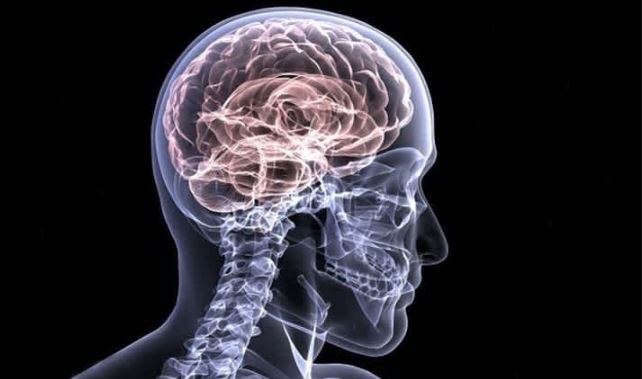Nicotine stimulates acetylcholine release from nicotinic acetylcholine receptors. This stimulation peaks during adolescence and is influenced by sex-dependent changes in brain structure.
Moreover, nicotine enhances neuronal activity, as measured by c-fos expression, more robustly in adolescents than in adult rats. Chronic nicotine exposure also alters the dendritic morphology of pyramidal neurons in the medial PFC.
Neurons
Most people know smoking is unhealthy and can lead to lung and heart problems, but few realize it significantly impacts the brain. Each neuron in the brain is a specialized cell communicating with other neurons by sending electrical signals across specialized junctions called synapses. Neurons are shaped like adding machines, with dendrites that branch out and collect excitatory and inhibitory input over time (temporal summation) and their surface area (spatial summation). If the information exceeds a threshold, the neuron fires an action potential that initiates communication with other neurons.
The adolescent brain is still maturing, making it particularly vulnerable to drug-induced changes in neural circuitry. In immature rats, acute nicotine treatment boosts locomotor activity and increases conditioned site preference. According to numerous studies, adolescents who smoke display attention problems as a result of the effects of nicotine on the brain. Furthermore, the limbic system, which controls cognition and drug reward, is immature in adolescent animals, so it is prone to long-term changes by nicotine.
Structural MRI studies of chronic cigarette smokers have identified differences in grey matter density in many brain regions. However, these studies only sometimes provide a clear interpretation of functional relations or behavioural implications. To help with this, we used meta-analytic techniques to identify clusters of convergent co-activation in regions of interest, thereby providing context for the structural effects of smoking.
Receptors
Nicotine is the primary addictive component of tobacco products. Its ability to trigger long-term effects on brain circuitry and its direct action on nicotinic acetylcholine receptors makes it unique among drugs of abuse in its capacity for inducing addiction.
Acute nicotine administration increases the firing rates and bursting patterns of dopamine (DA) neurons in the ventral tegmental area (VTA) and enhances DA release in the nucleus accumbens. In addition, systemic or intra-VTA nicotine administration elicits locomotor behaviour and reinforces conditioned place preference in rodents. These behavioural responses are absent in b2-subunit knockout mice, suggesting that the VTA DA neuronal changes induced by nicotine depend on high-affinity b2*nAChRs.
Chronic nicotine treatment alters adolescent brain function, including medial prefrontal cortex (mPFC) activity, through reversible alterations in nAChR expression. mGluR2 levels on presynaptic glutamatergic terminals are reduced by chronic nicotine exposure, reducing NMDA-sensitive synaptic transmission and impairing attention performance. Nicotine also increases the expression of nAChRs containing a4 and b2 subunits in mPFC, increasing GABAergic synaptic transmission.
Adolescents exhibit a unique vulnerability to nicotine’s rewarding and reinforcing effects, which may be partly due to altered prefrontal cortical development. C-fos expression patterns, a cell activation marker, change more robustly in adolescent than adult brains following nicotine administration, particularly in reward-related regions, such as the basolateral amygdala and nucleus accumbens shell.
Cells
The acetylcholine neurotransmitter is involved in many brain functions and is released by nerve cells called axons when they fire. Nicotine attaches to a specific structure on the surface of neurons known as an acetylcholine receptor, thereby stimulating them. There are many different types of acetylcholine receptors. However, the addictive effects of nicotine appear to involve only those that contain the alpha7 subunit, making them easier to target with medications to help smokers quit smoking.
Once the receptors are stimulated, they signal other neurons in the brain to stop firing. As a result, there is reduced activity in the prefrontal cortex (PFC) and a reduction in attention capacity. It explains why adolescent smokers are likelier to have poor attention skills and other behavioural problems such as depression and anxiety.
Nicotine stimulates nerve cells that regulate pleasure and reward, increasing dopamine levels. It creates a rewarding experience, which makes it easier to engage in the behaviour of smoking and also reinforces the desire for it.
In addition to enhancing rewards and pleasure, nicotine has been shown to have detrimental effects on learning, memory, impulse control, and brain development. It has even been linked to the onset of Alzheimer’s disease in older adults.
Growth
Using MRI, researchers found that people who smoke tobacco have more age-related brain volume loss in specific subcortical brain areas than nonsmokers. It may contribute to their higher risk for stroke and other health problems. Smoking also harms the structure of the prefrontal cortex, which controls decision-making and impulse control. Adolescents are especially at risk for these effects. The prefrontal cortex continues to mature during adolescence, and nicotine exposure can derail this process and cause lasting cognitive deficits.
Nicotine mimics the neurotransmitter acetylcholine by fitting into its receptor like a key into a lock, stimulating signals in the brain. Over time, this creates a tolerance to nicotine, meaning that more and more is needed to produce the same effect. The body then begins to compensate for the higher signalling levels, reducing the number of acetylcholine receptors. It leads to a decreased ability to regulate emotions, learn and respond to stimuli, and increase cigarette cravings.
The long-term effects of smoking are even more troubling, with studies showing that cigarette smoking causes permanent changes in parts of the brain that help us learn, handle stress, and exercise self-control. Adolescents are particularly susceptible to these long-term effects because their brains have matured. Adolescent smokers have higher rates of depression and other mental health disorders than never smokers.













